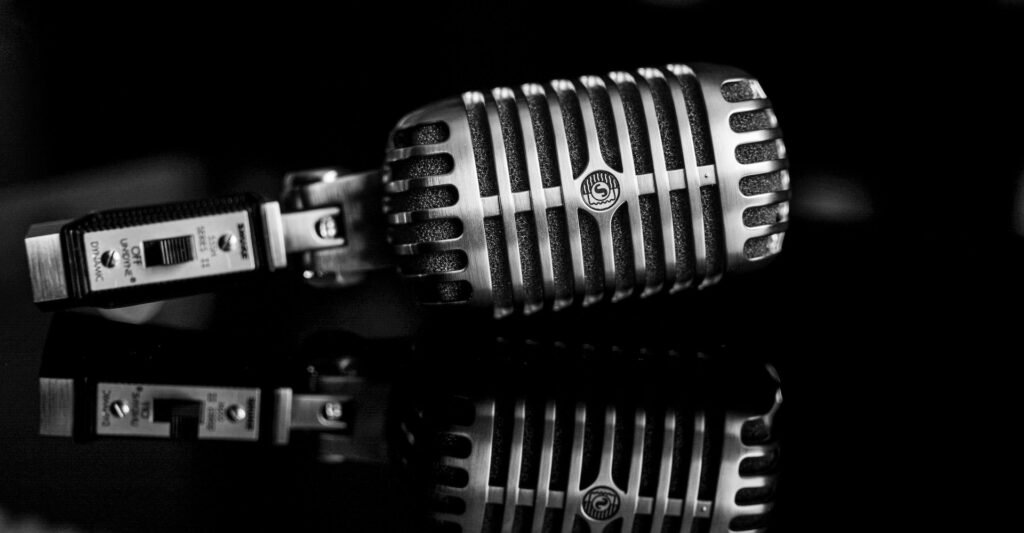
Microphones with built-in pop-filters are quite prevalent and as many or even more microphones come with custom pop-filters dedicated to the specific model. People love microphones with built-in pop-filters as they don’t cover the design of the microphone and since podcasts have become a thing and gaming was always there, you often want to have your good-looking microphone in view. In other cases, such as it became with the iconic Shure SM7B, the custom pop-filter complements how the microphone looks.
The membrane within the microphone is designed to sense relatively subtle vibrations and is easily overloaded by too much input. Hence, the air hitting the diaphragm often overloads the sensor and creates an unpleasant distorted sound. A pop-filter will reduce such plosives created by your mouth pushing out sudden air. It works by dissipating puffs of air before they reach the sensitive membrane of your microphone. Therefore, pop-filters are often built-in into microphones or included as an accessory in a package.
I have provided two lists of popular microphones, one of the microphones with built-in pop-filters and another of microphones with custom pop-filters included in a package.
Microphones with built-in pop-filter:
| Microphone | Type | Price ($) |
| Rode PodMic | Dynamic | 100$ |
| Rode Procaster | Dynamic | 170$ |
| Shure 55SH | Dynamic | 200$ |
| Shure 55SH Deluxe | Dynamic | 250$ |
| Electro-Voice RE320 | Dynamic | 300$ |
| Rode Broadcaster | Condenser | 420$ |
| Electro-Voice RE20 | Dynamic | 450$ |
| Electro-Voice RE27ND | Dynamic | 500$ |
| Neumann KMS 105 | Condenser | 700$ |
| Neumann BCM 705 | Dynamic | 700$ |
| Neumann TLM 102 | Condenser | 730$ |
Microphones with external pop-filter included:
| Microphone | Type | Price ($) |
| Lewitt LCT 240 Pro | Condenser | 160$ |
| Rode NTG1 | Shotgun | 185$ |
| Rode NT1-A | Condenser | 200$ |
| Rode NT1 Kit | Condenser | 230$ |
| Lewitt LCT 440 | Condenser | 270$ |
| AKG C 451 B | Condenser | 315$ |
| AKG Pro C214 | Condenser | 350$ |
| Stellar X3 | Condenser | 350$ |
| Rode NT2-A | Condenser | 380$ |
| Shure SM7B | Dynamic | 400$ |
| Lewitt LCT 540 Subzero | Condenser | 700$ |
| Neumann KM 184 | Condenser | 850$ |
| AKG Pro Audio C414 XLII | Condenser | 960$ |
| Sennheiser Professional MKH 416 | Shotgun | 1,000$ |
| Lewitt LCT 940 Reference Class | Condenser | 1,700$ |
| Neumann U 87 Ai | Condenser | 3,600$ |
The prices above are as of August 2022.
Different types of external pop-filters:
- Metal mesh pop-filter – usually the most pricy and premium-looking. I like them because they often don’t have edges around the mesh that would block the vision when reading a script and also they won’t tear.
- Nylon mesh pop-filter – a lower tier pop-filters compared to metal mesh. However, in terms of performance, there’s little to no difference. Also, they are very cheap.
- Foam pop-filter – even cheaper than nylon mesh pop-filters and also helps to reduce wind noise as they cover the microphone from all directions. However, they color the voice a bit.
Primarily, pop-filters were created as a method to avoid inadvertent spit collecting into the microphone from speaking into it. Also, built-in and cover-up foam pop-filters are great at preventing dust from reaching the insides of the microphone. All of which help prolong the longevity of the microphone.

Where can I buy an internal pop filter for my Yamaha MZ203 mic and my Electro voice PL91 mic , I live in Quebec Canada